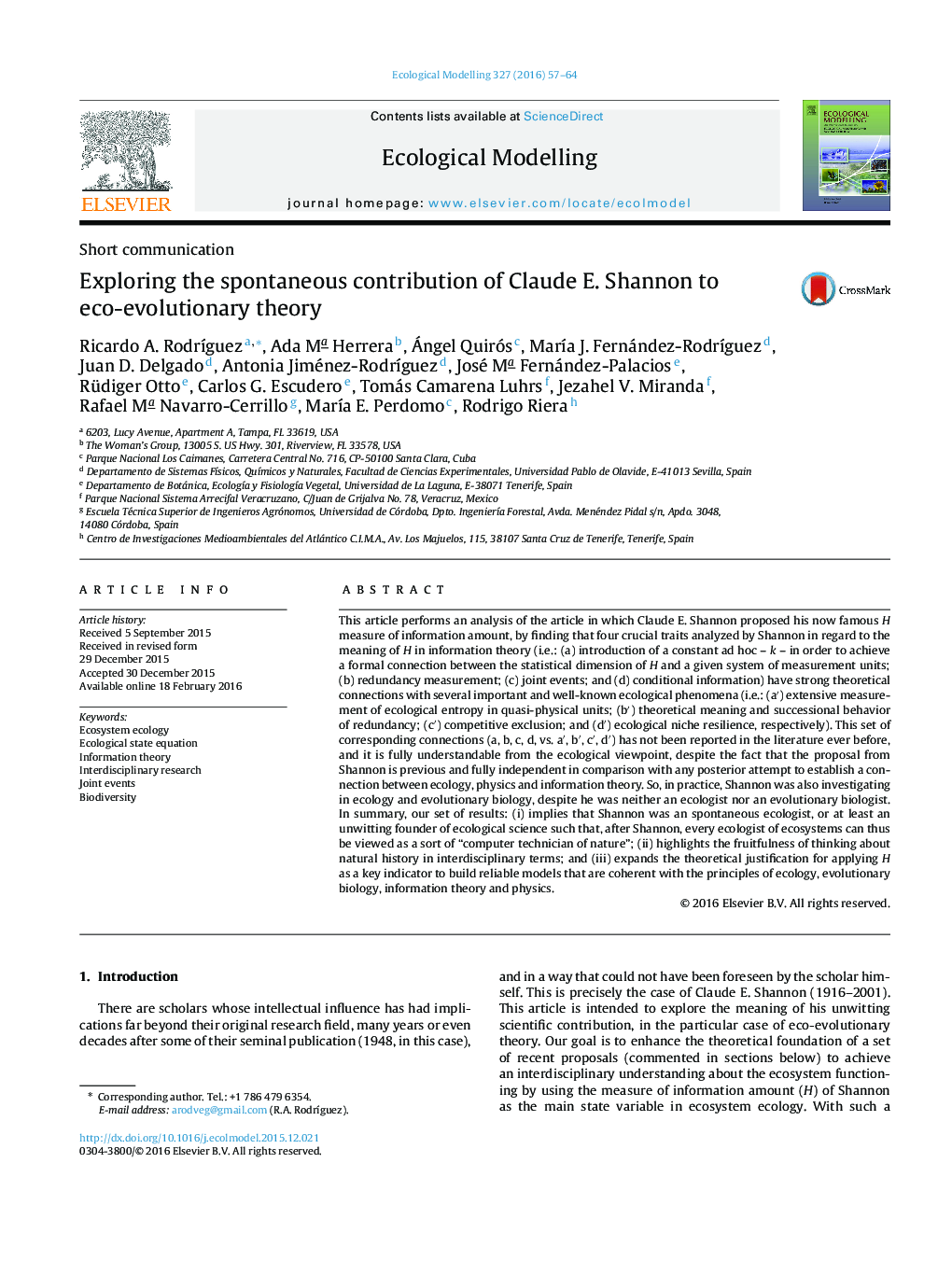| Article ID | Journal | Published Year | Pages | File Type |
|---|---|---|---|---|
| 6296314 | Ecological Modelling | 2016 | 8 Pages |
â¢Recent advancements to understand ecosystems from physics using Shannon's H (RAEPH).â¢RAEPH are unusual and unexpected according to conventional ecological theory.â¢Previous connections ecology-information theory would be suitable to support RAEPH.â¢This article finds 4 connections, neglected so far, in the work of Shannon himself.â¢As a result, there is a significant theoretical reinforcement in favor of RAEPH.
This article performs an analysis of the article in which Claude E. Shannon proposed his now famous H measure of information amount, by finding that four crucial traits analyzed by Shannon in regard to the meaning of H in information theory (i.e.: (a) introduction of a constant ad hoc - k - in order to achieve a formal connection between the statistical dimension of H and a given system of measurement units; (b) redundancy measurement; (c) joint events; and (d) conditional information) have strong theoretical connections with several important and well-known ecological phenomena (i.e.: (aâ²) extensive measurement of ecological entropy in quasi-physical units; (bâ²) theoretical meaning and successional behavior of redundancy; (câ²) competitive exclusion; and (dâ²) ecological niche resilience, respectively). This set of corresponding connections (a, b, c, d, vs. aâ², bâ², câ², dâ²) has not been reported in the literature ever before, and it is fully understandable from the ecological viewpoint, despite the fact that the proposal from Shannon is previous and fully independent in comparison with any posterior attempt to establish a connection between ecology, physics and information theory. So, in practice, Shannon was also investigating in ecology and evolutionary biology, despite he was neither an ecologist nor an evolutionary biologist. In summary, our set of results: (i) implies that Shannon was an spontaneous ecologist, or at least an unwitting founder of ecological science such that, after Shannon, every ecologist of ecosystems can thus be viewed as a sort of “computer technician of nature”; (ii) highlights the fruitfulness of thinking about natural history in interdisciplinary terms; and (iii) expands the theoretical justification for applying H as a key indicator to build reliable models that are coherent with the principles of ecology, evolutionary biology, information theory and physics.
